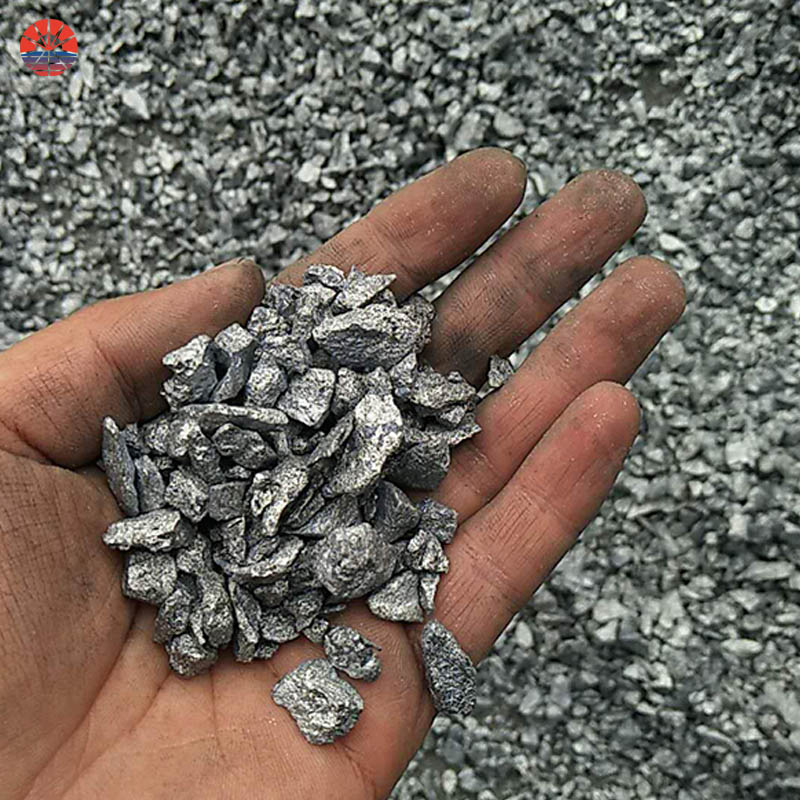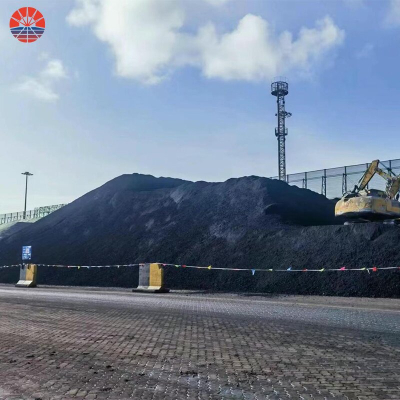75 Ferrosilicon
Ferrosilicon is an alloy made up of iron and silicon, with varying silicon content typically ranging from 15% to 90%. It is commonly used in various industrial applications due to its unique properties. Here are some of the main uses of ferrosilicon:
Steel production: The primary application of ferrosilicon is in the steelmaking industry. It is used as a deoxidizer and an alloying agent to improve the final properties of steel. By removing oxygen and other impurities from molten steel, ferrosilicon helps enhance its strength, hardness, and corrosion resistance.
Foundry industry: In the foundry sector, ferrosilicon is utilized as a reducing agent and inoculant. It helps to reduce the melting point of cast iron and improve its fluidity during casting, resulting in better castings with reduced defects.
Ferroalloy production: Ferrosilicon is essential in the manufacturing of other ferroalloys like ferromanganese and ferrochrome. These ferroalloys are used in various applications, such as in stainless steel production and as additives to impart specific properties to different types of steel.
Magnesium and magnesium alloys production: Ferrosilicon is employed to produce magnesium and magnesium alloys. It acts as a reducing agent, facilitating the extraction of magnesium from magnesium oxide.
Welding applications: In certain welding processes, ferrosilicon is used as a filler material. It helps to improve the weld's quality and strength.
Dense media separation: Ferrosilicon is used in dense media separation processes to separate minerals based on their density. This technique is commonly applied in mineral processing, coal washing, and recycling applications.
Chemical industry: Ferrosilicon finds application in the chemical industry for manufacturing various silicon compounds, such as silanes and silicones, which have diverse uses, including in lubricants, sealants, and adhesives.
Semiconductor industry: In the production of semiconductors and electronics, ultra-pure silicon is required. Ferrosilicon can be a source of silicon for the initial production of semiconductor-grade silicon.
Overall, ferrosilicon plays a crucial role in multiple industrial processes, contributing to the enhancement of various materials and products we use in our daily lives. The specific grade and composition of ferrosilicon depend on the intended application and the desired properties in the final product.
The Production Process Of Ferrosilicon
The production of ferrosilicon involves the carbothermic reduction of silica (usually in the form of quartz) and iron sources in a submerged arc furnace (SAF). The process can be summarized in the following steps:
Raw materials preparation: The main raw materials required for ferrosilicon production are quartz (silica) and iron sources. The silica is typically in the form of quartzite or quartz sand, while the iron sources may include iron ore, iron scraps, or steel mill scale. These raw materials are carefully selected and blended to achieve the desired silicon content in the final ferrosilicon product.
Charging the submerged arc furnace: The prepared mixture of silica and iron sources is loaded into the submerged arc furnace. The furnace is a closed, refractory-lined vessel designed to operate under submerged conditions, meaning the charge materials are completely covered by the electrically conductive slag.
Heating and reduction: Carbon in the form of coke or anthracite coal is also added to the charge as a reducing agent. The submerged arc furnace is then energized, and an electric current passes through three graphite electrodes that extend into the furnace. The electrical resistance generated by the charge and the electrodes heats the materials to very high temperatures, typically around 2,000 to 2,300 degrees Celsius (3,632 to 4,172 degrees Fahrenheit).
At these high temperatures, several reactions take place:
SiO2 + 2C → Si + 2CO
Fe2O3 + 3C → 2Fe + 3CO
The carbon reduces the silica (SiO2) to produce silicon (Si) and carbon monoxide (CO) gas, and it also reduces the iron oxide (Fe2O3) to produce iron (Fe) and carbon monoxide (CO) gas.
Formation of ferrosilicon alloy: The silicon and iron produced in the reduction reactions combine to form the ferrosilicon alloy. The silicon content in the alloy typically ranges from 15% to 90%, depending on the desired grade of ferrosilicon.
Slag formation and separation: The gangue materials present in the raw materials, such as ash and impurities, react with the flux (lime or dolomite) added to the charge to form a liquid slag. The slag floats on top of the molten ferrosilicon alloy and protects it from oxidation during the process.
Tapping and casting: Once the reduction and alloy formation are complete, the molten ferrosilicon is tapped from the furnace and cast into molds. The molds may vary in size and shape, depending on the intended application and customer requirements.
Cooling and solidification: The molten ferrosilicon in the molds is allowed to cool and solidify. After solidification, the material is broken into smaller pieces, such as lumps or grains, depending on the intended market or application.
Crushing, screening, and packaging: The solidified ferrosilicon is crushed into the desired particle size range using crushers and then screened to ensure uniformity. The final ferrosilicon product is then packaged and ready for distribution to various industries.
It's essential to note that the production process can be optimized and modified based on the specific grade of ferrosilicon required and the equipment used in different manufacturing facilities. Additionally, some production facilities may utilize advanced technologies to enhance energy efficiency and reduce environmental impact during the production process.
Specification
Quality inspection certificate of finished product | |||
Product name | Ferro Silicon | Batch No. | ZC2023-06-13 |
Sampling Site | / | Product specifications | / |
Acceptance date | 2023.06.13 | Report date | 2023.06.14 |
Test items | SH/T 0313-92 | Test results | |
Appearance | This product should be black solid | ||
Si | 75.32 | ||
c | 0.11 | ||
P | 0.03 | ||
s | 0.014 | ||
A1 | 0.77 | ||
Conclusion | Product conforms to specification. | ||








